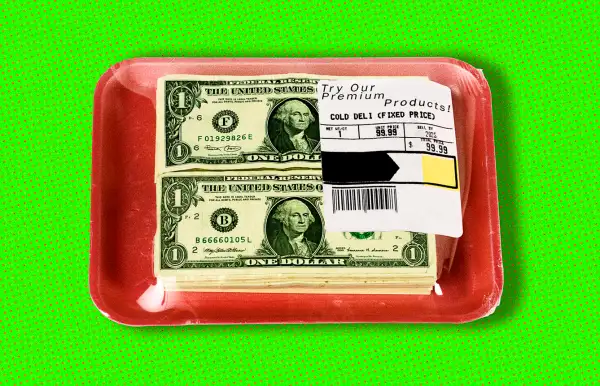'No Place to Hide': Where and When Trump's Tariffs Will Hit Your Wallet

President Donald Trump unveiled sweeping tariffs last week aimed at narrowing the trade deficits between the U.S. and its trade partners. The taxes on imported goods are expected to have major ramifications for the economy — and your wallet.
On so-called “Liberation Day” Wednesday, Trump announced a 10% baseline tariff that applies to foreign goods coming into the U.S., plus harsher tariffs on goods coming from many of the country's closest trading partners, including China and the European Union. These trade taxes are in addition to the ones already in effect on Canada and Mexico.
The financial fallout was immediate.
The S&P 500, the Nasdaq Composite and the Russell 2000 indices sunk to 52-week lows before recovering some losses. Bitcoin and oil prices also dropped. Wall Street’s fear gauge, a volatility tracker called VIX, spiked as uncertainty and panic gripped investors.
On Thursday and Friday alone, plummeting U.S. stock prices wiped out about $6.6 trillion, marking the worst two-day rout on record, according to Dow Jones market data. Meanwhile, analysts at Goldman Sachs and JPMorgan Chase revised their 2025 recession probability assessments upward, to 45% and 60%, respectively.
But that’s the big picture. Experts say tariffs will have big rippling effects on your everyday finances, too.
Why tariffs will affect prices
The U.S. is the largest importer in the world. So when imported goods are subject to tariffs of 10% (most countries) to 50% (Lesotho), prices of all kinds of everyday items on store shelves will increase as a result.
By exactly how much mostly depends on the item in question — where it came from, what it’s made of and whether a U.S. business somewhere in the supply chain decides to absorb some of the tariff cost before passing on the rest to you at checkout.
Buying American-made products is no sure-fire way to avoid increasing prices. Experts say that when foreign goods largely get more expensive, that gives American businesses room to raise prices on U.S.-made goods because they don't have to compete as much with foreign-made goods on price.
“The exact channel of the price changes doesn’t really change the overall burden of tariffs, it just changes how we experience it,” says Erica York, the vice president of federal tax policy at the right-leaning Tax Foundation.
Simply put: Price increases will affect people differently depending on how and where they shop. Some items may soar in price while others barely budge. But the net effect is difficult to understate.
Ultimately, Trump’s tariffs are expected to raise over $2.8 trillion in revenue over the next 10 years while lowering gross domestic product by 0.7%, according to the Tax Foundation. The blanket 10% tariffs are in effect as of Saturday, and tariffs on countries with rates higher than 10% are scheduled to start Wednesday.
‘All Americans’ to see higher prices
As a result of the president's tariffs, inflation is projected to increase 2.3% in the short term, according to the Budget Lab at Yale. Per household, that comes out to a loss of nearly $3,800 in spending power annually.
“All Americans are going to be impacted by this,” says Ernie Tedeschi, the director of economics at the Budget Lab. “It’s important to realize this is going to be harder for poorer people to weather both because they have less room in their budgets for price increases and because they buy more physical goods than rich people.”
A similar analysis by the Tax Foundation found that the effect of Trump’s tariffs on people’s earnings translates into a decrease in after-tax income by more than 2%. York says that shakes out to a $2,100 tax hike per household.
“That’s all before we figure out what foreign countries are going to do,” York said on a Tax Foundation podcast episode released Friday. “Retaliation would make those economic harm numbers larger.”
According to the Budget Lab’s analysis, clothing, food and cars are disproportionately affected by Trump’s tariffs. Tedeschi notes that apparel prices are expected to jump by about 20%. Overall food prices are slated to rise by 2.8%, with fresh produce prices increasing 4%.
In terms of dollar amounts, tariffs may have the largest effect on automobiles. The cost of vehicles and parts are projected to rise by 8.4%, or about $4,000 for the typical new car.
Ford CEO Mark Fields told CNN last week that price hikes on cars are going to be unavoidable.
“The cost of vehicles will go up. It’s just math,” he said. “The bottom line is there is absolutely no vehicle that won’t be impacted by tariffs.”
Groceries first in line for price hikes
Given the nature of tariffs, the varying rates by country and the uncertainty around whether businesses will try to absorb some of the increased tax cost — it’s nearly impossible to tell exactly when you’ll notice costs going up across the board.
However, experts say that items that can’t be stored for long periods of time — namely, groceries, and especially fresh fruits and veggies — are likely to be the first to get hit with noticeable price hikes.
“Much of American food is imported, and grocery stores by the very nature of their business couldn’t stockpile fresh produce ahead of time,” Tedeschi says. “Expect to see prices at the grocery store change more quickly than other items.”
On the other hand, durable goods (think: automobiles and home appliances) are often bought ahead of time and stored in warehouses before they hit the market. Because businesses may be sitting on inventory that was imported before tariffs went into effect, it will typically take longer for shoppers to see those prices jump.
But jump they will.
“In a trade war,” Tedeschi says, “there’s no place to run, no place to hide.”
More from Money:
Which Is Worse: a Recession or a Bear Market?
Stockpiling Before Trump’s Tariffs? Experts Warn It Could Backfire
Buy Now, Pay Later Loans Can Now Appear on Your Credit Report

